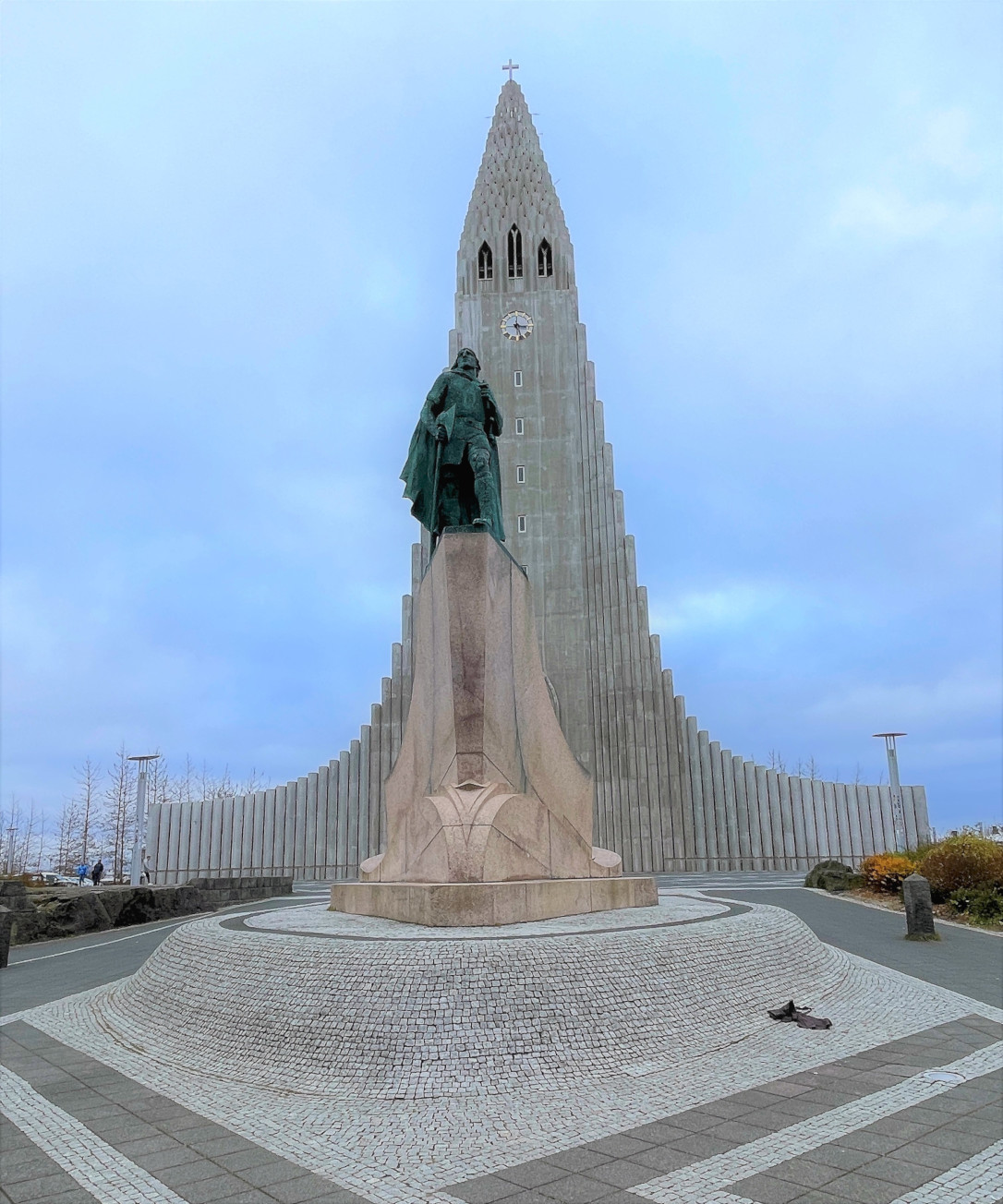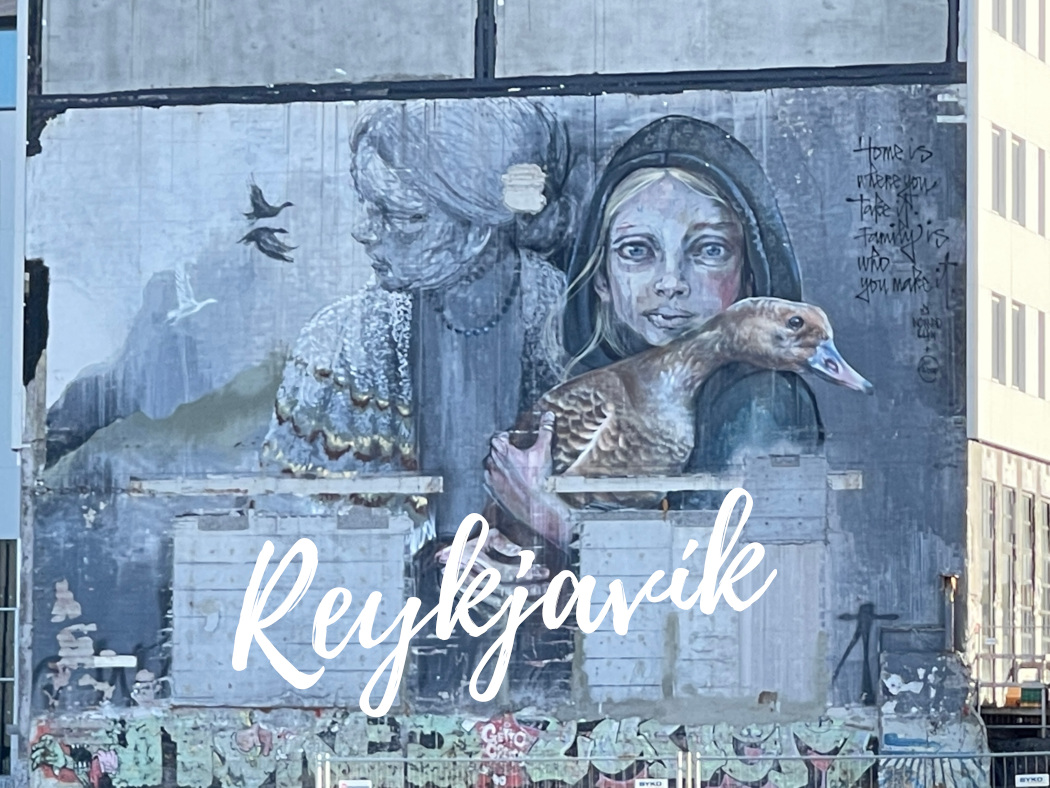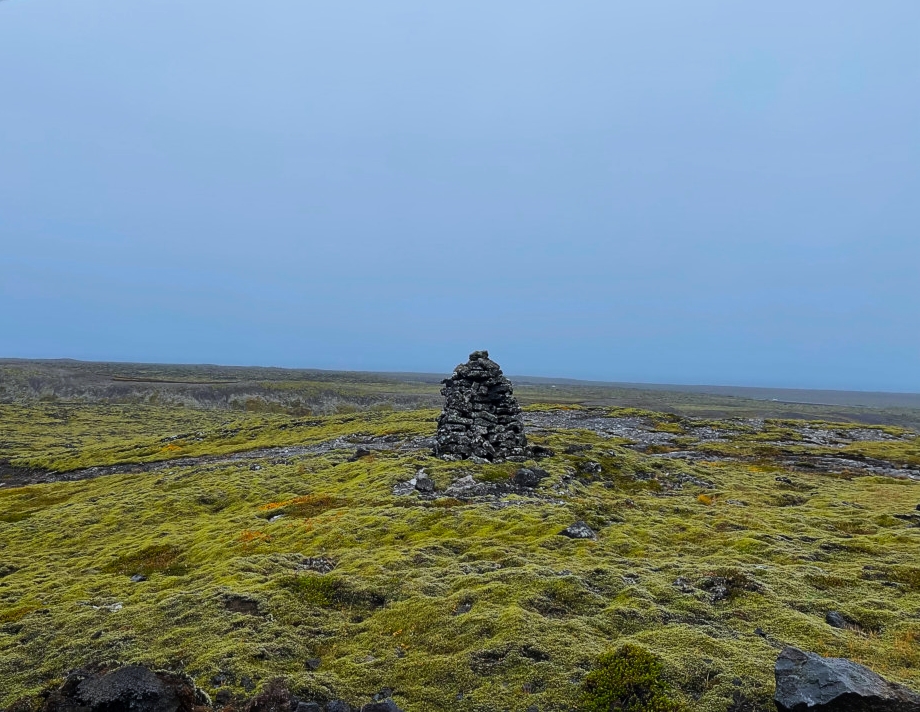 |
| Seen down Spítalastígur. The white house on the corner used to be Spítalastígur 9, but is now Bergstaðastræti 14. Source |
Three years later, when the fire occurred on February 14th, 1921, Ísleifur rushed out to see what was going on. At first he felt like he had seen this fire before, but couldn’t quite understand why or how. Soon he realized that it was the exact same scene as he saw in his dream three years earlier. There was no doubt in his mind that this was the same fire he had seen in his dream.
 |
| Spítalastígur 9 before the fire in 1921. Source |
| |
| Mjóstræti 2. |
Gíslína was sewing and the girl crocheting. While they were sitting there enjoying the moment, Gíslína noticed the girl had stopped crocheting and instead was clamping her hands and looking off to the side.
Gíslína sat quietly watching the girl. Something strange was going on. This wasn’t a normal behavior for her.
 |
| Mjóstræti. Across the street from nr. 2 was Rev. Níelsson’s home, nr. 3 |
When the girl came back to her normal state, Gislína talked to her about what the girl had seen. Gíslína didn’t recognize the man she described. The girl couldn’t explain who it was, either, just that he was trying to tell them something and she couldn’t figure out what it was.
 |
| Gíslína Gísladóttir (1866-1945) |
When the girl came to, she was horrified. She had seen an awful vision. She saw a house burning and a man dying in the fire. In the vision she was standing on the other side of town, somewhere around Skólvarða (the hill where Hallgrím’s church stands) or somewhere nearby. She could see the fire from where she was standing. She could see several people who were caught in the fire and got hurt, but she couldn’t tell how bad their injuries were. The girl was extremely scared of her vision.
Gíslína could tell the girl was shook up and went over to comfort her. She figured it had to do with the election excitement that was highly elevated at the moment, but the girl thought it was a sign of something bad about to happen.
Gíslína told her husband, Einar, about the incident that same evening. He thought he might know who the man was.
 |
| Skólvarða or School cairn, is the white tower to the right. It was torn down in order to make room for the Leifur Eiriksson statue |
My personal speculation is that the man that Gíslína’s guest saw in her vision may have been Eufemía’s maternal grandfather. His name was Pétur Guðjohnsen and photos of him remind me of the way the girl described him. He was among other things, a man of the Althing (Alþingismaður), school principal, song teacher and organ player for Reykjavik Cathedral.
Einar Kvaran would have known this man. He was very close friend with Eufemía’s parents and likely knew her grandfather at some point during his teenage years as a student in Reykjavik.
 |
| Spítalastígur 9 is the corner house on the right. Source. |
Vilborg Guðnadóttir (1865-1948) lived on Bjargarstígur 6, only a few houses down from Spítalastígur 9. On February 14th, 1921, at 10:00 a.m. she looked out her window and saw a house on fire somewhere near Bergstaðastræti. She hurried off to find out what was going on and see how big the fire was. When she got to the burning house on Spítalastígur 9, it was already in flames and falling apart.
 |
| Bjargarstígur 6. Source |
As she stood there on the corner where the house was, she felt certain someone was dying inside the house. What made her so certain was the fact that she saw spirit beings soaring above the fire. Vilborg recognized some of the spirit beings. They were the late Eggert Waage (1824-1900) and his wife, Kristín Waage (-1898), Pétur Guðjohnsen (1812-1877) and his wife, Guðrún S. Guðjohnsen (1818-1899). This would have been the same Pétur Guðjohnsen (Eufemía’s grandfather) who appeared in the girl’s vision.
Vilborg left the site of the fire without knowing if everyone made it out safe. A few hours later, her vision was confirmed. A teenage boy had died in the fire. It was Eggert Waage’s grandson and namesake, Eggert Waage.
 |
| Seen down Spítalastígur. The white house on the corner used to be Spítalastígur 9. It is now Bergstaðastræti 14. The car is driving down Bergstaðastræti. |
What actually happened that night on February 14 1921?
 |
| Jens B. Waage, actor and accountant. |
 |
| Eufemía Indriðadóttir Waage |
There hadn’t been a bad fire in Reykjavik since the big fire in 1915.
Much anger and frustration was expressed about the delayed response time from the fire department. This in turn caused all kinds of rumors around town. Thankfully, the fire department responded well when they were approached by a journalist and were willing to give clarifying explanations for every account needing one. It turned out that on that particular day, the fire department didn’t receive any phone calls about the fire. Upon further investigation it turned out that something went wrong with their phone lines. There were also some issues with the electricity which caused their large water motor-pump to fail.
The visions
Blog on Ísleifur
Photo of Spítalastígur 9
Photo of Mjóstræti
Order of the Dannebrog
Photo of Gíslína Gísladóttir
Photo of Skólavörðuholt
Jens B. Waage
Eufemia Waage
Eufemia Waage (1)l
Jens Waage
Vilhelm Knudsen
Indriði Indriðason
Vilborg Guðnadóttir
Pétur Guðjohnsen
Photo of Jens B. Waage
Photo of Eufemía Indriðadóttir Waage
Fire article in the newspaper (1)
Concerned citizen about the fire
Fire article in the newspaper (2)
Fire article in the newspaper (3)
Fire article in the newspaper (4)




